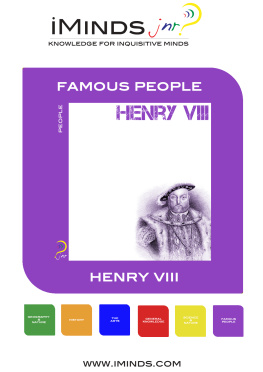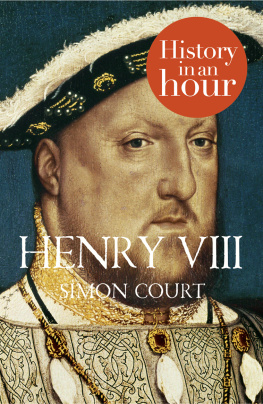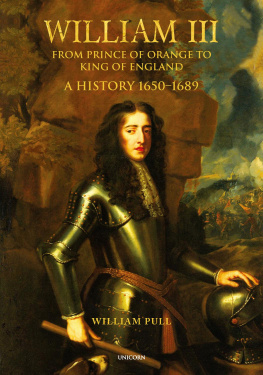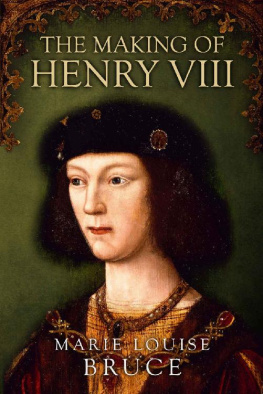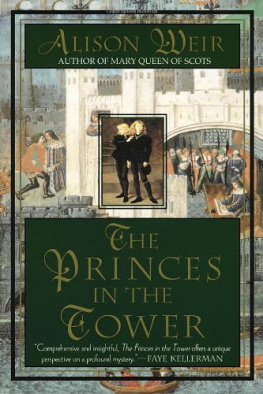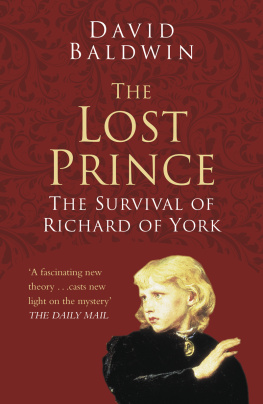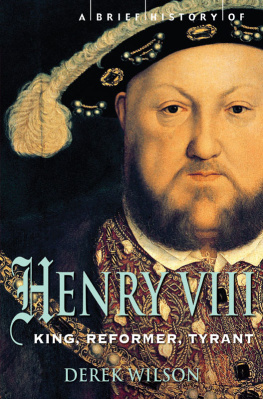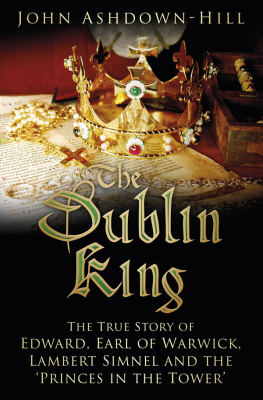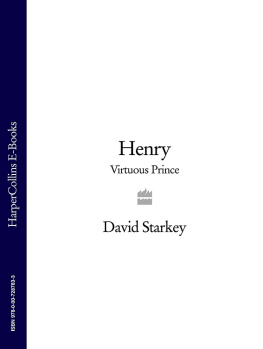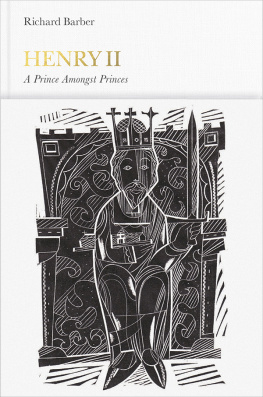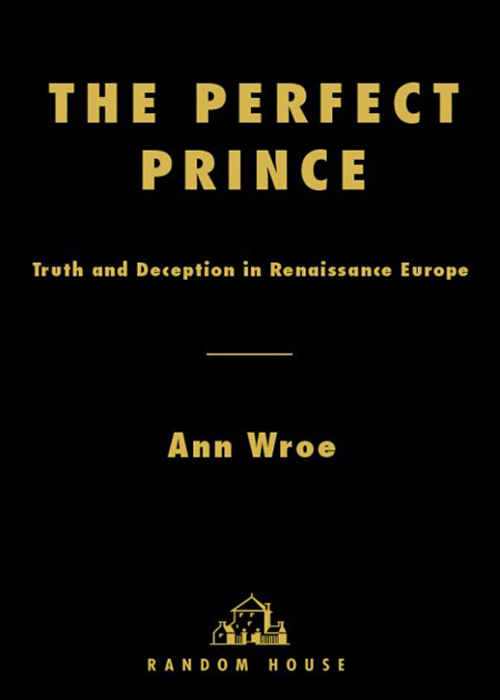
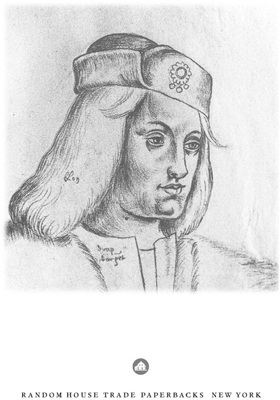
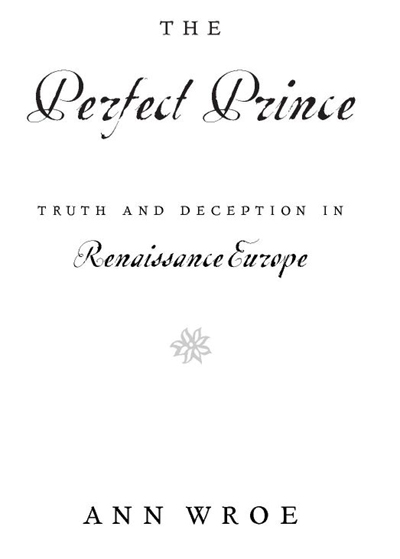
Table of Contents
PRAISE FOR The Perfect Prince
Wroes exciting and colorful book immerses itself not only in the sources... but in the costumes and ideological world of the late fifteenth century.... She continually re-creates the cultural world of the period. The New York Times Book Review
Wroe uses [Perkin Warbecks] story to peer with precise and elegant prose into the atmosphere and customs of the time.... It is beautifully strange... and to our modern eyes, mysterious. Los Angeles Times
A brilliantly crafted account of the political intrigue in northern Europe, Scotland, Ireland and England during the late Middle Ages... Be prepared to learn a great deal. The Philadelphia Inquirer
[A] masterful biography... In an age where thieves pilfer identity, where fake journalists fabricate stories and where, having tired of reality shows, we turn to poseur reality shows for entertainment, The PerfectPrince will be especially resonant. Raleigh News & Observer
A highly readable and fascinating new story... Wroe nicely evokes the ephemera of image and manners that, along with lineage, enabled a prince to rule.... She re-creates the shifting sands of identity that confounded his contemporaries. Publishers Weekly
Compulsively readable... Wroe imaginatively draws back the arras to discern the mysterious corners of history. Booklist
Wonderful... an entrancing and engrossing book, with a wealth of fascinating detail. Allan Massie, The Literary Review
Extraordinary... [Wroes] knowledge is remarkable, and her writing... is sublime.... [ThePerfect Prince is] a master class in how biography, in the right hands, can breathe life into the darkest... pockets of the past. Kathryn Hughes, The Guardian
A magnificent evocation of medieval Europe... Ann Wroe has conjured up a whole world, exploring the medieval mind-set with fluent erudition.... This is one of the best books I have read on the Middle Ages. Lucy Moore, The New Statesman
Astonishingly detailed and moving.... [Wroe] works like an Impressionist painter, applying hundreds of tiny details, all meticulously but unobtrusively documented, to achieve her effects. Christina Hardyment, The Independent

INTRODUCTION

THIS BOOK IS ABOUT A MYSTERY. It has remained unexplained for so long that most people believe it has been solved; but not so. And unlike other historical posers, to do with the dates of battles or the terms of treaties or the motivation for invasions, this one is about the most fundamental issue of all: who a man was. When he walked in the world as a young English prince, at the very end of the fifteenth century, almost no one knew whether he was truly that prince, or an impostor. And since his death on the gallows at the age of twenty-fiveor possibly twenty-six, for who knows?that mystery has only grown deeper.
He claimed to be Richard, Duke of York, the younger of the Princes in the Tower. Those princes were presumed to have been killed to make way for their uncle, Richard III, but this young man said he had survived. In this persona, he tormented Henry VII for eight years. He emerged in Ireland in 1491, to be honored and protected by the courts of France, Burgundy, the Empire and Scotland. He tried three times to invade England, sometimes eluding capture only by moments. He was a political pawn, and also the most keenly sought diplomatic prize in Europe: handsome, charismatic, beautifully mannered, everybodys perfect prince. At the height of his success, he was married to an earls daughter. But he was officially proclaimed to beand apparently, in custody, confessed he wasa boatmans son. History now knows him as Perkin Warbeck, the name Henry Tudor delighted to call him.
The mystery of his identity was compounded by the games people played with him. The greatest European rulers of the agethe Emperor Maximilian, Ferdinand and Isabella of Spain, Charles VIII of France neither knew nor cared who this elegant young charmer was. Instead, they employed him for their own purposes: to unsettle the new King of England and reorder the world to their advantage. All who dealt with him gave him the identity they wished him to have: either the Duke of York, or a conceited upstart from Flanders. It is possible that he was neither. It is also possible that, by the end, even he did not know who he really was.
This books first purpose, therefore, is to resurrect a marvelous tale that seems on the brink of being forgotten. Its second purpose is to dissect, and call into question, the official cover story. Modern cover stories leave trackscomputer messages, phone logsby which they betray their nature. Very old cover stories acquire a patina of age and settle into history. So it is with Perkins confession, whichthough largely ignored at the timeis now accepted as true by almost all respectable historians. James Gairdner, the finest fifteenth-century historian of the Victorian age, effected that change by first linking the family details given in the confession to documents in the archives of Tournai, in Belgium. Henry VII hadnt made this family up; so his rival must have been, indeed, just a boatmans boy, cajoled into being a prince (as the confession said) by a group of disaffected Yorkists in Ireland. And that was the end of the story. Most historians of the period now treat Perkin with a certain impatience, as a colorful but tiresome diversion on the way to the Triumph of the Tudors. He sparkles for a time but soon blows away, amusing and inconsequential.
Those who look closely find a picture that is deeply perplexing. This young man caused far more trouble, and more nearly upended Henry, than he is usually given credit for. Though he was allegedly attempting an astonishing tricktrying, as a low-born foreigner, to get the throne of Englandhe proved very hard either to deflate or to expose. The main players, including Henry, behaved toward him in ways that are often difficult to explain. Beyond this, the Tournai family was never linked properly to Henrys captive, nor he to them. Much does not fit in the neat parameters of the official confession, and never has. A different story, perhaps a surprising one, may have been unfolding here. The truth lies somewhere in the details.
Yet catching this character is notoriously hard. He was known to be ungraspable in his own time, like quicksilver or a shooting star. Of the writers who have triedamong them Mary Shelley, Friedrich Schiller and Lord Alfred Douglasit is possible that no one has captured him except John Ford, whose wonderful play portrays an impostor-prince who believes so completely in his own majesty that he is, in effect, the person he claims to be. In the febrile, casually mendacious and highly colored world of the late fifteenth century, this young man is almost the perfect exemplar of his time. To write his life, therefore, it is necessary to explore not just late-fifteenth-century politics and diplomacy, but late-fifteenthcentury ways of seeing, deceiving and understanding.
Next page

